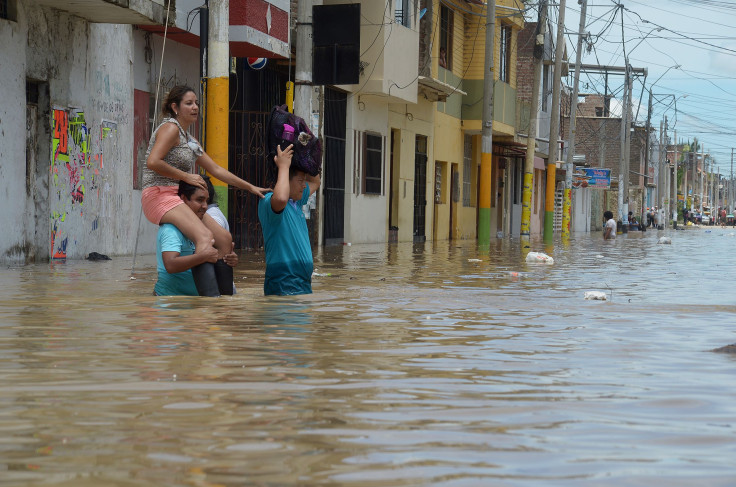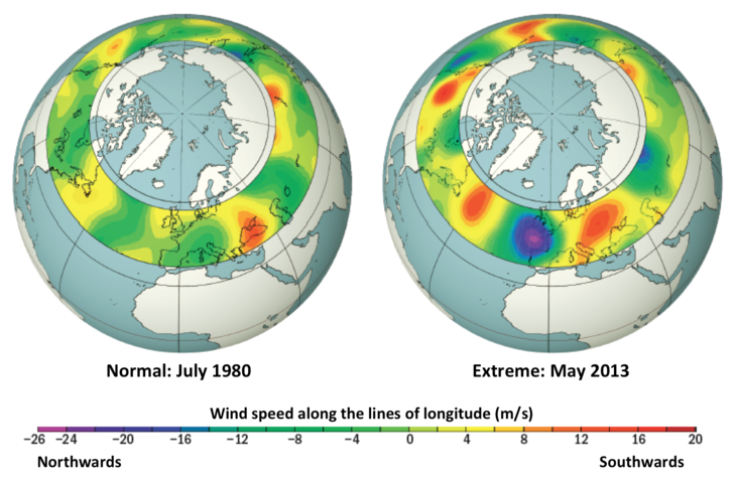Climate Change Impact On Jet Stream Leads To Extreme Weather Events, Study Finds

Extreme weather events — flooding, forest fires, scorching summers, torrential rains, unseasonal snow, droughts and so on — have been on the rise around the world in recent years, and there were many theories about their link to climate change. However, a study published Monday by U.S. and European scientists found a clear relationship between extreme weather phenomena and the impact of climate change on the jet stream.
The jet stream is a large current of air, about 200 miles wide and 2 miles deep, flowing roughly 5 to 7 miles above the surface of Earth. It doesn’t flow in a straight line, but instead, it turns, curves, bends and meanders oddly sometimes. The two main currents of the stream flow from west to east around Earth, and the jet stream itself has a very large impact on weather changes on the planet.
Read: Climate Change Enhances Intensity Of Snowstorms
The researchers looked at historical atmospheric data and compiled information on the conditions around the formation and persistence of extreme weather patterns. They found those conditions occurred when the jet stream was stationary and its peaks and troughs became locked in place. When half a dozen or more of these peak-trough pairs surround the globe, the jet stream acts as a barrier for weather movement or a waveguide for the atmosphere.
“If the same weather persists for weeks on end in one region, then sunny days can turn into a serious heat wave and drought, and lasting rains can lead to flooding,” Stefan Rahmstorf from Potsdam Institute for Climate Impact Research (PIK), Germany, and a co-author of the study, said in a statement Monday.

Using real-world historic observations of the jet stream and extreme weather events, the research team found a clear correlation in the late spring and summer. They also found the pattern becoming more prominent in the observations, as well as in simulations from climate models.
Michael Mann, lead author of the study and a professor at the Pennsylvania State University, said in the statement: “Using the simulations, we demonstrate that rising greenhouse gases are responsible for the increase. … We are now able to connect the dots when it comes to human-caused global warming and an array of extreme recent weather events.”
Titled “Influence of Anthropogenic Climate Change on Planetary Wave Resonance and Extreme Weather Events,” the open-access study was published in the journal Nature Scientific Reports.
“Combined with other additional proposed mechanisms for climate change impacts on extreme weather, this adds to the weight of evidence for a human influence on the occurrence of devastating events such as the 2003 European heat wave, the 2010 Pakistan flood and Russian heat wave, the 2011 Texas heat wave and recent floods in Europe,” the study concluded.
© Copyright IBTimes 2024. All rights reserved.











